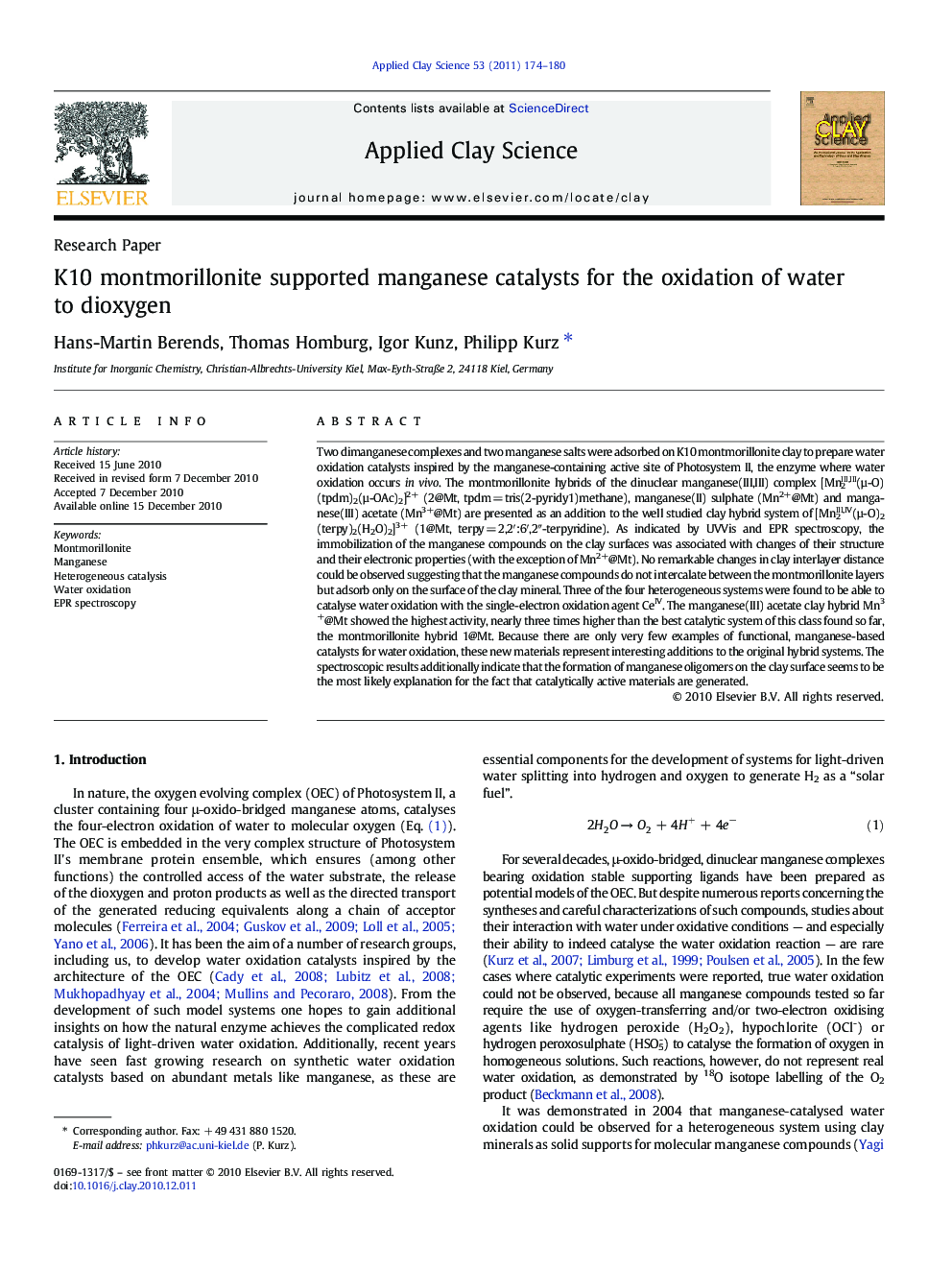| کد مقاله | کد نشریه | سال انتشار | مقاله انگلیسی | نسخه تمام متن |
|---|---|---|---|---|
| 1695621 | 1011868 | 2011 | 7 صفحه PDF | دانلود رایگان |

Two dimanganese complexes and two manganese salts were adsorbed on K10 montmorillonite clay to prepare water oxidation catalysts inspired by the manganese-containing active site of Photosystem II, the enzyme where water oxidation occurs in vivo. The montmorillonite hybrids of the dinuclear manganese(III,III) complex [Mn2III,III(µ-O)(tpdm)2(µ-OAc)2]2+ (2@Mt, tpdm = tris(2-pyridy1)methane), manganese(II) sulphate (Mn2+@Mt) and manganese(III) acetate (Mn3+@Mt) are presented as an addition to the well studied clay hybrid system of [Mn2III,IV(µ-O)2(terpy)2(H2O)2]3+ (1@Mt, terpy = 2,2′:6′,2″-terpyridine). As indicated by UVVis and EPR spectroscopy, the immobilization of the manganese compounds on the clay surfaces was associated with changes of their structure and their electronic properties (with the exception of Mn2+@Mt). No remarkable changes in clay interlayer distance could be observed suggesting that the manganese compounds do not intercalate between the montmorillonite layers but adsorb only on the surface of the clay mineral. Three of the four heterogeneous systems were found to be able to catalyse water oxidation with the single-electron oxidation agent CeIV. The manganese(III) acetate clay hybrid Mn3+@Mt showed the highest activity, nearly three times higher than the best catalytic system of this class found so far, the montmorillonite hybrid 1@Mt. Because there are only very few examples of functional, manganese-based catalysts for water oxidation, these new materials represent interesting additions to the original hybrid systems. The spectroscopic results additionally indicate that the formation of manganese oligomers on the clay surface seems to be the most likely explanation for the fact that catalytically active materials are generated.
Research highlights
► Water-oxidation catalysts were prepared by adsorption of Mn on K10 montmorillonite.
► The catalytically active units are most likely Mn ≥ 3-oligomers on the clay surface.
► A manganese oxidation sate ≥ + III seems to be a prerequisite for active catalysts.
Journal: Applied Clay Science - Volume 53, Issue 2, August 2011, Pages 174–180